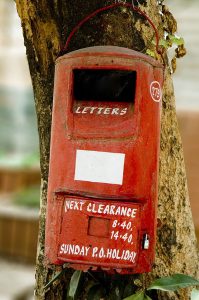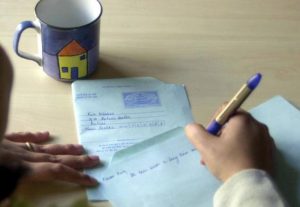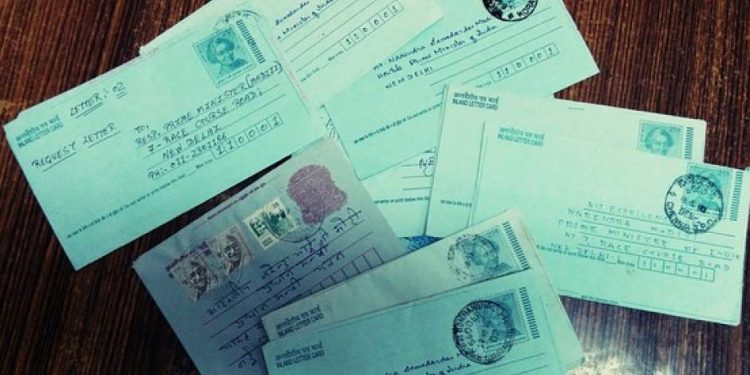The joy of receiving a letter from a khaki-clad postman and the excitement to know its content can’t be compared to the pop up texts on smartphones, says Adhyapak Biswaranjan, a noted litterateur, orator and critic of Odisha
Hindi blockbuster Naam, released in 1986, had set quite a few milestones. While it was the comeback vehicle for actor Sanjay Dutt who didn’t look back after that, the movie propelled Mahesh Bhatt into the big league following his art house movies like Arth and Saaransh.
But the chief attraction of the movie was Chithi Aayee Hai, a number sung by ghazal singer Pankaj Udhas, who also appeared on screen for the first time. The song became so popular that viewers in theatres would often demand for a rerun after the show. No wonder, it went on to be listed among the 100 songs of millennium by BBC Radio. Reason: The song resonated with people’s feelings as the lines were more about human emotion, nostalgia and family values.
This was the time when communicating with loved ones using digital media was not even a part of people’s thoughts. Letter writing was the ultimate medium for distant as well as intimate communication. But with the advent of the information age and its modern communication channels, letters have now become part of a lost past. Students at schools are taught about letter writing skills but with ‘text me’ fast replacing ‘write me’, they don’t get a chance to communicate in real life through letters.
Perhaps we are not too far from a time when one can see the letters only in museums. However, here’re a few people who continue to write letters even today. They share with Sunday POST their thoughts on the significance of letter writing and how snail mail is more meaningful than any mode of instant messaging.

Enriching literature
Writing a letter is like telling a story which makes you experience something that modern communication channels are unable to offer, says Netajee Abhinandan, Head, Department of Political Science, Ravenshaw University. He also is the Editor of Chithi (Letter), a quarterly literary magazine that publishes the letters which have some kinds of historical values, significance and a bearing on the way people live or evolution.
Netajee says, “Chithi basically wants to establish that
like poems, novels, short stories, epistles are also part of
literature.”
Elaborating more on the significance of letters he adds, “We publish letters which have some universal significance like letters between litterateurs, having debate on literary issues or some kind of dialogues on literary problems, a letter written from a mother to a son or from a father to a daughter but that doesn’t contain only the routine aspects of life but must have some universal values and significance. We also have published some letters which bring to the fore many facts of history like the hand written communication between Mahatma Gandhi and Netaji Subhas Chandra Bose or Maulana Azad and Gandhi and the exchange of letters between Gandhi and Sarala Devi Choudhurani with whom he had developed closeness. Even historical letters like the one written by Bhagat Singh to his mother on the eve of his hanging are part of the magazine.”
Letter is so significant that some popular books like Godavarish Mohapatra’s Premapathe, Padma Shri Laxminarayan Sahu’s Premika and Krushnachandra Tripathy’s autobiography are based on the letters they exchanged with various individuals, concludes Netajee.
Mode of fortifying bonds
Though Chithi, under the editorship of Netajee, aims to establish epistolary form as part of literature, his father Prof. Biswaranjan, also known as Adhyapak Biswaranjan, laid the foundation of the magazine. Biswaranjan who dons many hats- litterateur, orator, editor, and political scientist and has contributed to every genre of literature – says it was the exchange of letters between his parents which had drawn him into the world of literature.
The joy of receiving a letter from the khaki-clad postman and the anxiety to know its content can’t be compared to the pop up texts on smartphones, says Biswaranjan who conceived the idea of publishing the letters in the form of a magazine in 1970.

Narrating the role of letters in his life he continues: “Exchanging letters was the only medium to express love for your female friend at college in those days. The practice of girl-boy interaction on college campus or at a quiet corner was yet to begin. So, letters were the last resort to escape the eyes of the social police. On the pretext of exchanging notebooks on the college corridor, personal notes too were changing hands. Letters from several lovely women and colleagues continue to enrich my life even when I was past my prime and led a fulfilling conjugal life. I have also received plenty of love from my students via letters. They continued to write to me after I got transferred from one college to another. Letter is a part and parcel of my life and it has no end.”
“I don’t get the thrill that I experience after getting a letter, in those countless instant messages that I get on my smartphone,” he signs off.
A trip down memory lane
Being born and brought up in a rural setup, I have an emotional bond with hand-written letters and they will remain a pleasant memory in my life, says Tapas Ranjan Rout, who works as the branch manager of The Oriental Insurance Co Ltd at Kendrapara.
“There were many elderly people in our village who could neither write nor read. So, I was an interpreter for them. While playing this role, I came to know about their life and emotions which helped me grow as a human being,” reveals Tapas who still writes letters to his select friends.
Talking more about the significance of letters, he adds, “Writing letters had won me quite a few pen friends across the state during my school and college days. I am still in touch with them and interact regularly. Though the medium now has become digital, decades back I could reach them through hand-written letters. I have preserved their letters and I get immense pleasure when I take a look at them.”
Tapas still feels the thrill that he experienced when he got his first love letter from a girl in Class IX. The tear-stained letter and those imperfect lines conveyed the state of mind his girlfriend was in and gave him a feeling as if she was in his arms, recalls Tapas who accumulated many scented letterpads from Archies and Hallmark galleries.
He also remembers how the motivating lines from his mother stood by him when he was struggling in life.
Pointing out the virtues of hand-written letters, Tapas says, “A letter is something which we can re-read and re-live. These days, we are deleting messages from our inbox when it is overwhelmed but earlier we used to preserve the letters. No matter how far we progress technologically, it is difficult to get rid of the charm of a letter. A letter worked as the glue for broken hearts while technology often plays a major role now to cause heartbreaks.”
“It is true that we have to move ahead with the time but the romance will remain little off-colour without those intense love letters,” he signs off.






































